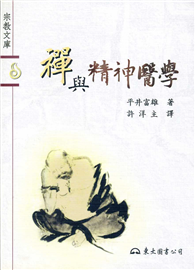| FindBook |
有 1 項符合
Incomplete Categorical Data Design的圖書 |
 |
Incomplete Categorical Data Design: Non-Randomized Response Techniques for Sensitive Questions in Surveys 作者:Tian 出版社:CRC Press 出版日期:2013-08-17 語言:英文 規格:精裝 / 322頁 / 23.4 x 16.3 x 2.5 cm / 普通級 |
| 圖書館借閱 |
| 國家圖書館 | 全國圖書書目資訊網 | 國立公共資訊圖書館 | 電子書服務平台 | MetaCat 跨館整合查詢 |
| 臺北市立圖書館 | 新北市立圖書館 | 基隆市公共圖書館 | 桃園市立圖書館 | 新竹縣公共圖書館 |
| 苗栗縣立圖書館 | 臺中市立圖書館 | 彰化縣公共圖書館 | 南投縣文化局 | 雲林縣公共圖書館 |
| 嘉義縣圖書館 | 臺南市立圖書館 | 高雄市立圖書館 | 屏東縣公共圖書館 | 宜蘭縣公共圖書館 |
| 花蓮縣文化局 | 臺東縣文化處 |
|
|
圖書介紹 - 資料來源:博客來 評分:
圖書名稱:Incomplete Categorical Data Design
內容簡介
'Preface Acquirement of sensitive information is often needed in a broad range of statistical applications. For instance, some behavioral, epidemiological, public health and social studies may need to solicit information on reproductive history, sexual behavior, abortion, human immunode ciency virus, acquired immune de ciency syndrome, illegal drug usage, family violence, income, child abuse, employee theft, shoplifting, social security fraud, premature sign-o s on audits, in delity, driving under in uence, having a baby outside marriage, tax evasion, and cheating in university examinations. When being directly asked these sensitive survey questions, some respondents may refuse to answer and some may even provide untruthful answers in order to protect their privacy. The problem becomes even more complicated with surveys in diverse populations because of the interaction of sensitivity and respondent diversity. It is therefore difficult to draw valid inferences from these inaccurate data that include refusal bias, response bias and perhaps both. It has long been a challenge to obtain such information while having the privacy of the respondent protected and the resulting data analyzed properly. Although there are a number of methods (see, e.g., Barton, 1958) for asking embarrassing questions in non-embarrassing ways, the rst ingenious interviewing technique to overcome the above di culties is the randomized response approach, proposed by Warner (1965), that aims to encourage truthful answers from respondents. The randomized response technique is designed to ask a sensitive question according to the outcome of a randomizing device while the interviewer is blind to the outcome'--
|











